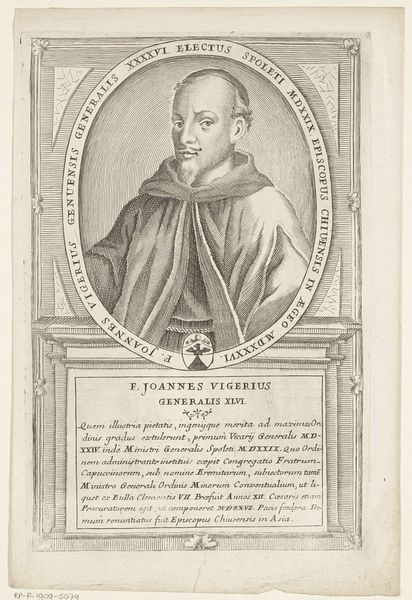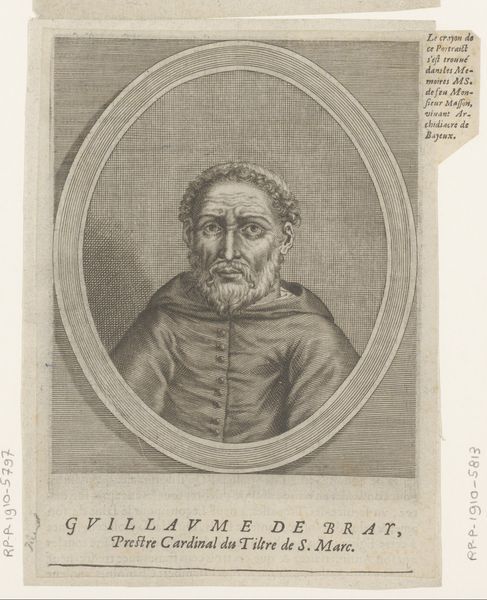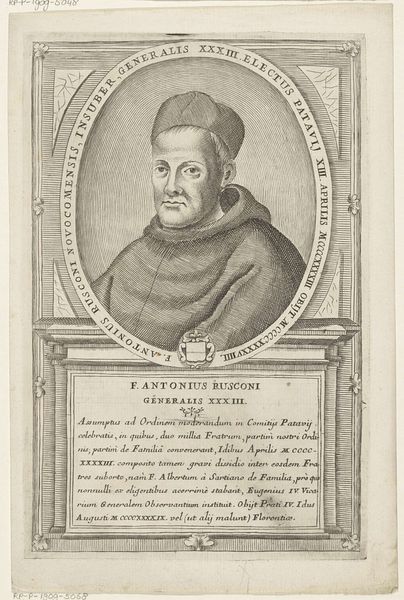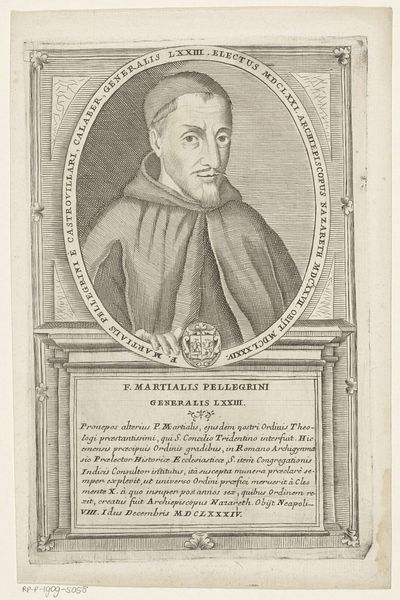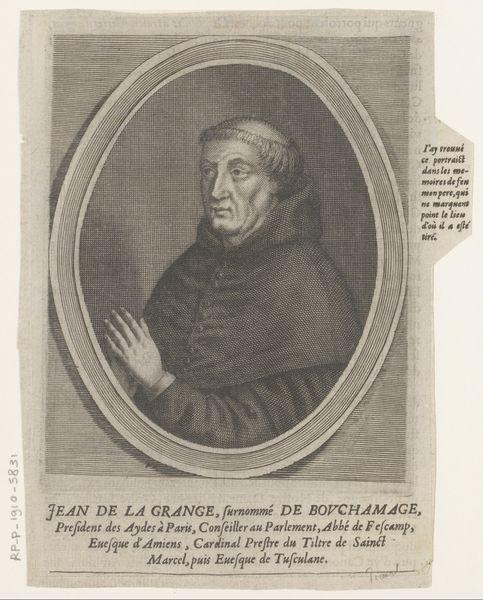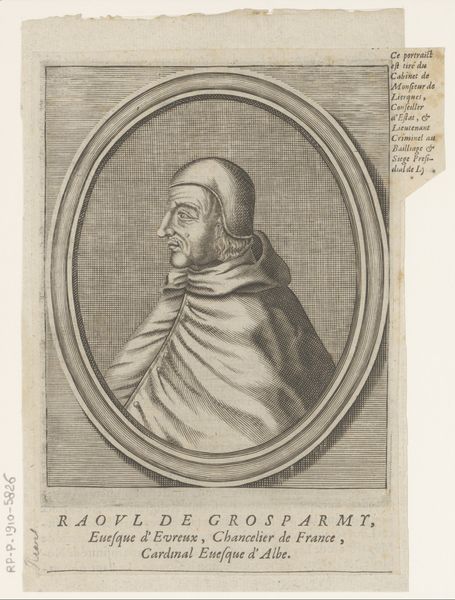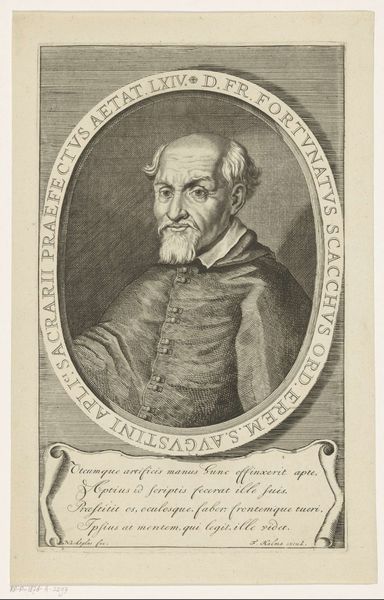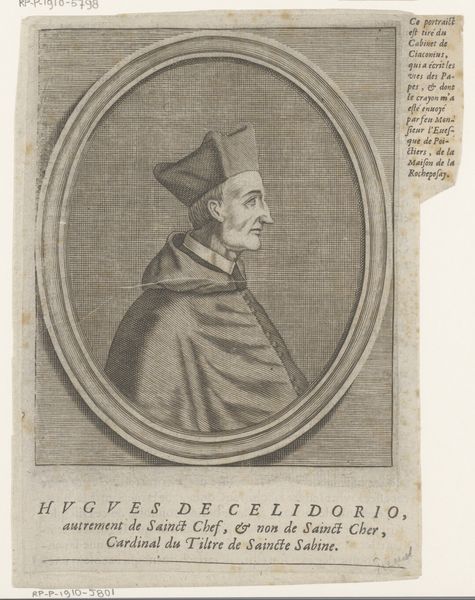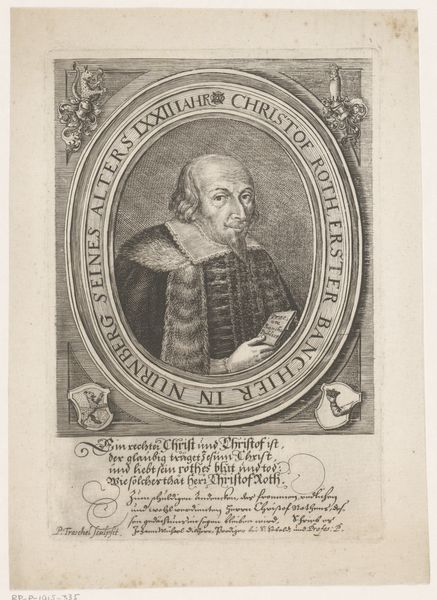
engraving
#
portrait
#
baroque
#
history-painting
#
engraving
Dimensions: height 178 mm, width 141 mm
Copyright: Rijks Museum: Open Domain
Editor: We are looking at a portrait of Gervais Gancelot de Clinchamp. The print was created by Etienne Picart in 1660. The technique employed here is engraving. It feels incredibly formal, quite representative of its time, wouldn't you say? How does the social role of portraiture play out here? Curator: Absolutely. The portrait speaks volumes about the intersection of power, religion, and the burgeoning culture of image production. The very existence of this engraving suggests a desire to disseminate Gancelot's image, to solidify his position within the Church and perhaps within broader social circles. Consider the choice of engraving, a medium allowing for relatively wide distribution compared to, say, an oil painting. Editor: So it’s less about personal vanity and more about public representation? Curator: Exactly. It's about crafting a public persona, negotiating how the Church and its members wanted to be seen. Note also the text accompanying the image; these elements were strategically presented together for a calculated effect on the viewer. Where do you think these calculated strategies occur in similar historical events or portraitures? Editor: The framing of the figure within the oval… the gaze is very direct, there’s definitely an effort being made to appear resolute and dignified! I hadn't fully appreciated how much these kinds of prints served a function in shaping public perception. Curator: Precisely. It's a carefully constructed performance of power and piety, reflecting both the individual's aspirations and the institution's imperatives. By viewing it through a historical and social lens, we begin to understand the deeper layers of meaning embedded in the artwork. Now you start seeing its cultural purpose, yes? Editor: Absolutely. This was much more than just depicting the person; it played an active role in how people perceived Gervais Gancelot and his office within a particular social climate. I feel I have grown much more attuned to the social purpose art has. Curator: Indeed! Recognizing that function gives us a richer understanding and allows for a broader experience with art as a whole.
Comments
No comments
Be the first to comment and join the conversation on the ultimate creative platform.


